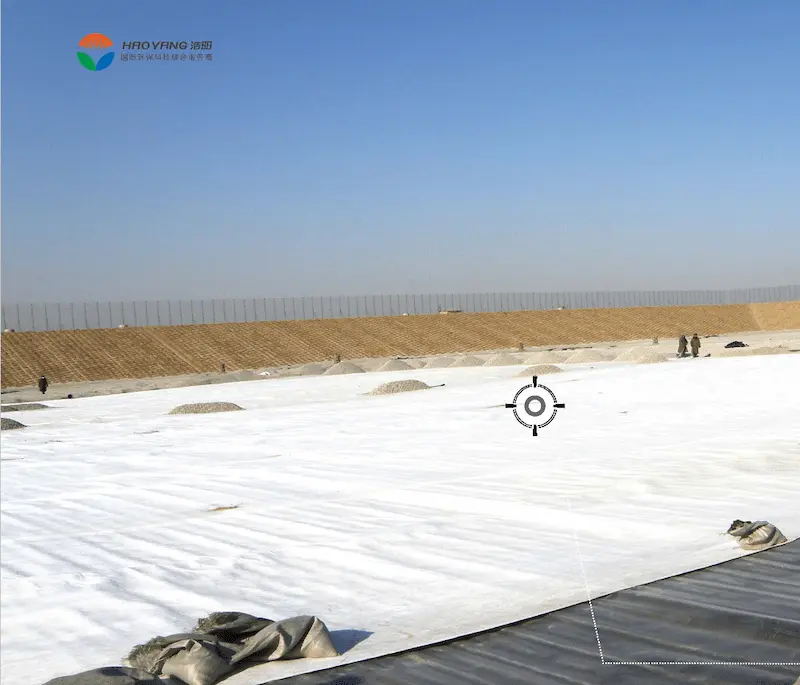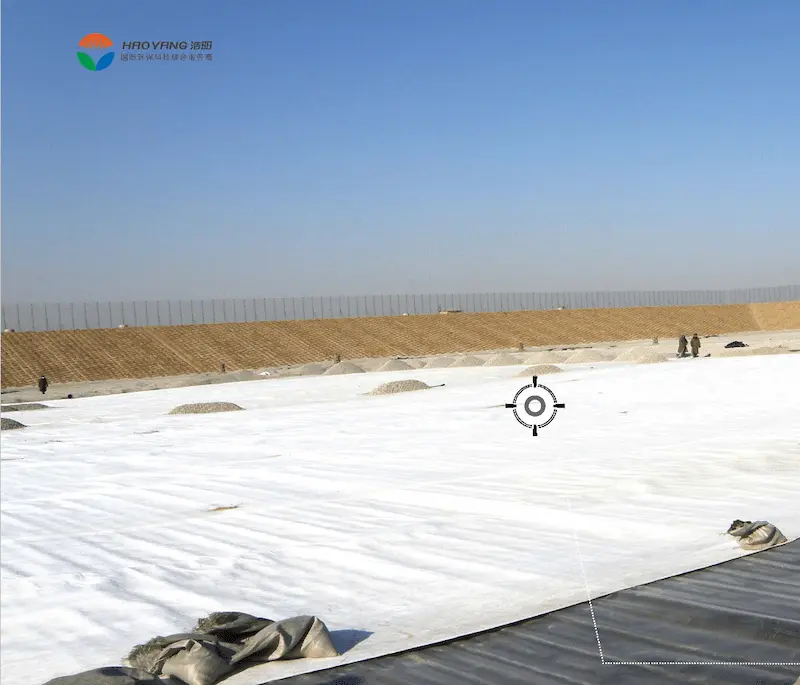Jingbian County Urban Domestic Garbage Landfill Project (Phase I)
The Jingbian County Urban Domestic Garbage Landfill Project (Phase I) covers an area of 62,476 square meters (approximately 93.7 mu), with a landfill capacity of 1.04 million cubic meters and an effective capacity of 1.029 million cubic meters. The landfill is designed to handle 300 tons of garbage per day and has a design service life of 10 years.
Adopting sanitary landfilling technology, this landfill aims to improve the environmental conditions of the original garbage dump sites, creating a beautiful and clean environment for residential areas while conserving a significant amount of land and enhancing spatial utilization. Additionally, the project utilizes manual horizontal impermeability measures, with a composite lining impermeability system at the bottom of the landfill area. This system combines a polyester filament spunbonded needle-punched geotextile layer, HDPE artificial impermeability layer, GCL bentonite waterproof blanket, composite drainage network, and compacted soil to prevent the infiltration of leachate and contamination of surrounding surface water, groundwater, and soil. This approach reduces the risk of harm to human health, saves on pollution control costs, mitigates economic losses caused by pollution, and enhances resident satisfaction, demonstrating significant environmental, economic, and social benefits.
Covering an area of approximately 60,000 square meters, the landfill's impermeability project was constructed by our company. Utilizing a composite lining system, our company's three-dimensional composite drainage network is employed to effectively direct, drain, and collect leachate, thereby preventing contamination of surface water, groundwater, and soil.
The impermeability system of this project adopts a composite structure, taking into account the overall effect in its design. The materials and their functions of each layer from bottom to top are as follows:
Three-dimensional composite drainage network: It has the comprehensive effects of reinforcing the foundation, providing "filtration-drainage-ventilation-protection". At the same time, it reduces the thickness of the drainage layer, increases the effective capacity of the landfill, lowers the engineering construction cost, and is durable.
Sodium bentonite waterproof blanket: It prevents sharp objects from damaging the membrane and effectively avoids the harm caused by uneven settlement to the HDPE geomembrane. As an auxiliary impermeable layer, it does not contaminate groundwater and can prevent groundwater from infiltrating back.
HDPE geomembrane: It is corrosion-resistant and anti-aging, providing excellent impermeability and isolation effects.
Non-woven geotextile: It is anti-aging and impact-resistant, able to provide long-term effective protection for the HDPE geomembrane, preventing the membrane from being damaged by friction caused by sharp objects or sudden uneven loads.
This structural design is conducive to the smooth drainage of leachate, landfill operations, and improving the utilization rate of landfill space.

(Jingbian County Urban Domestic Garbage Landfill Project (Phase I))



781.webp)